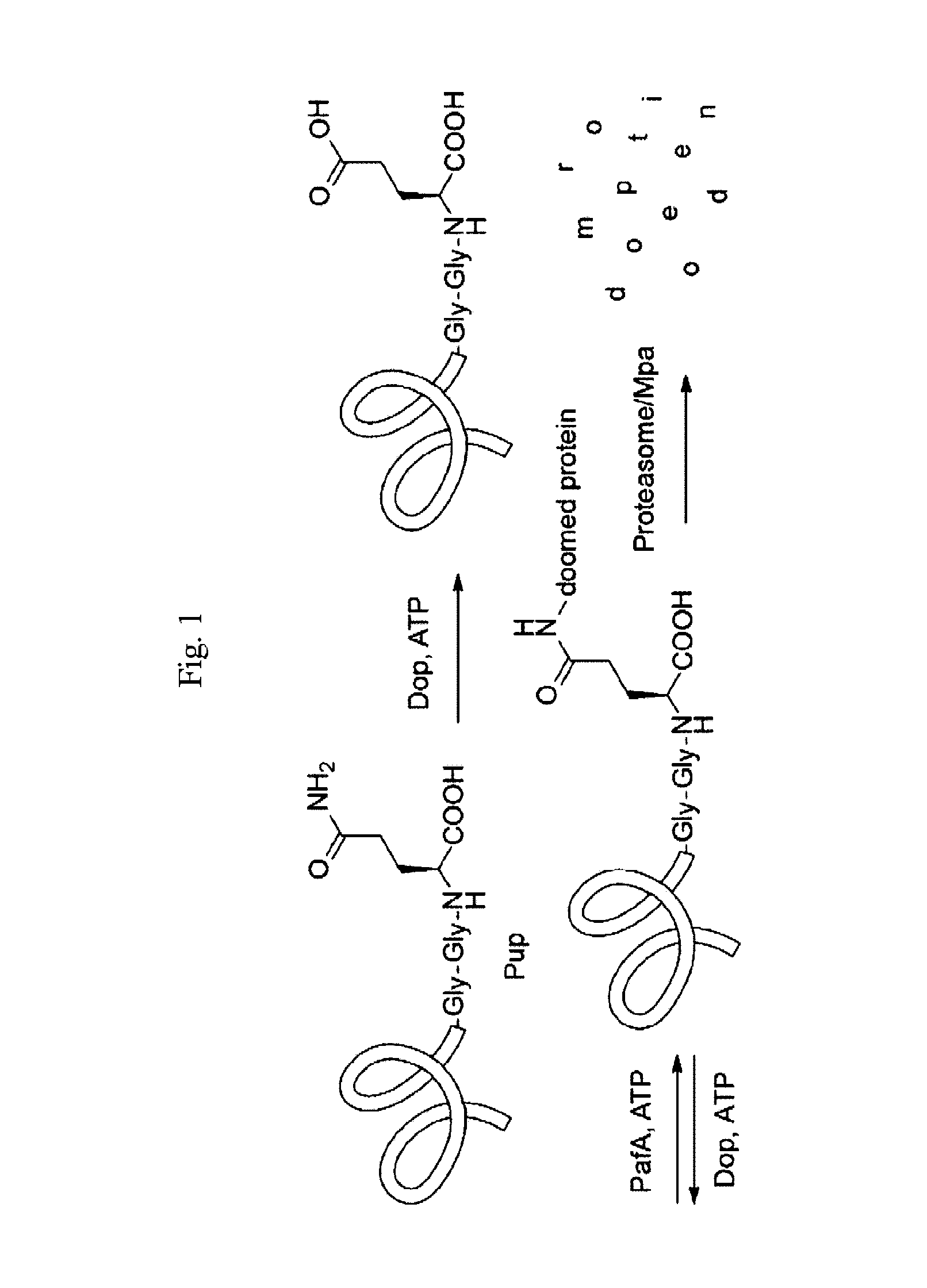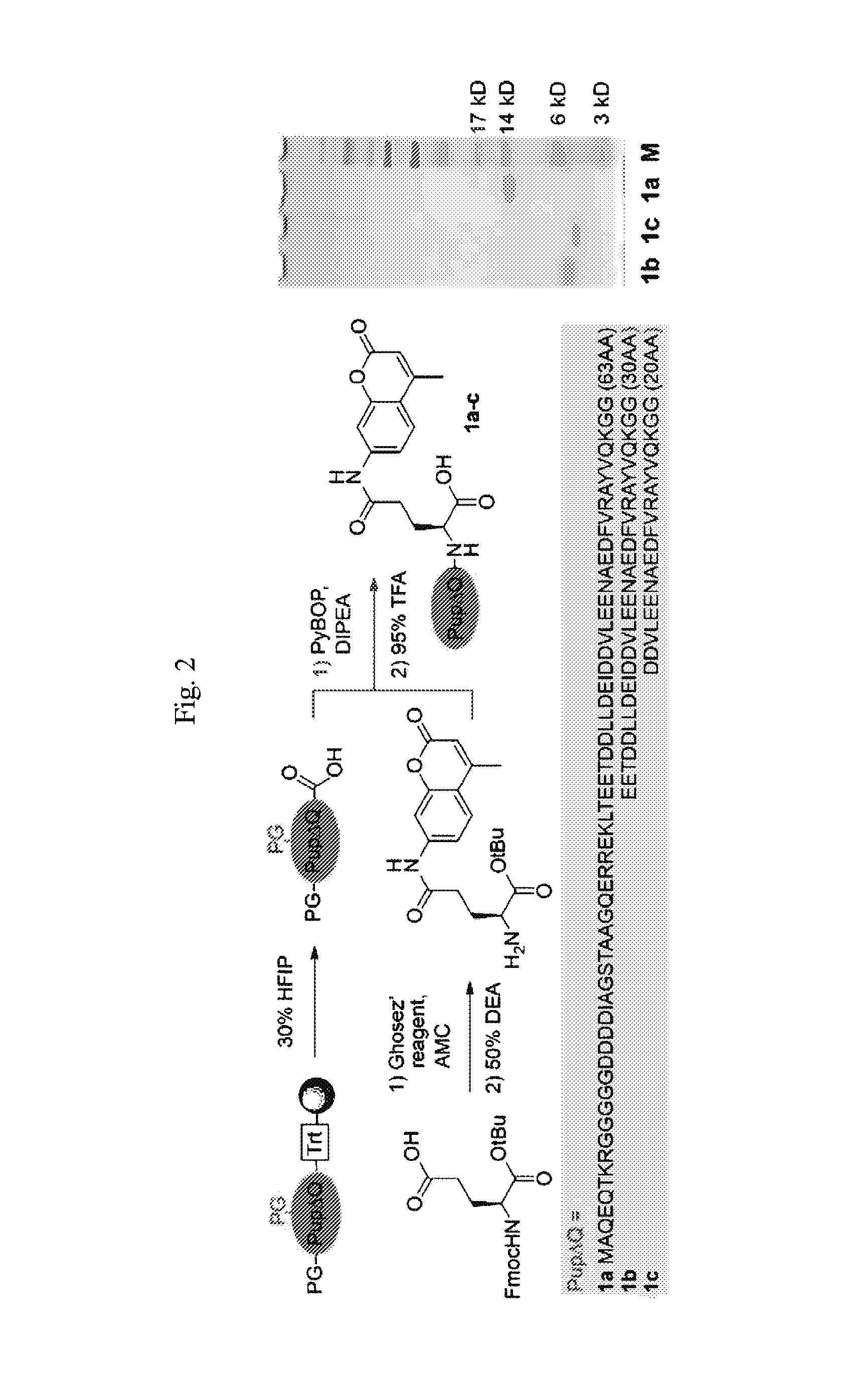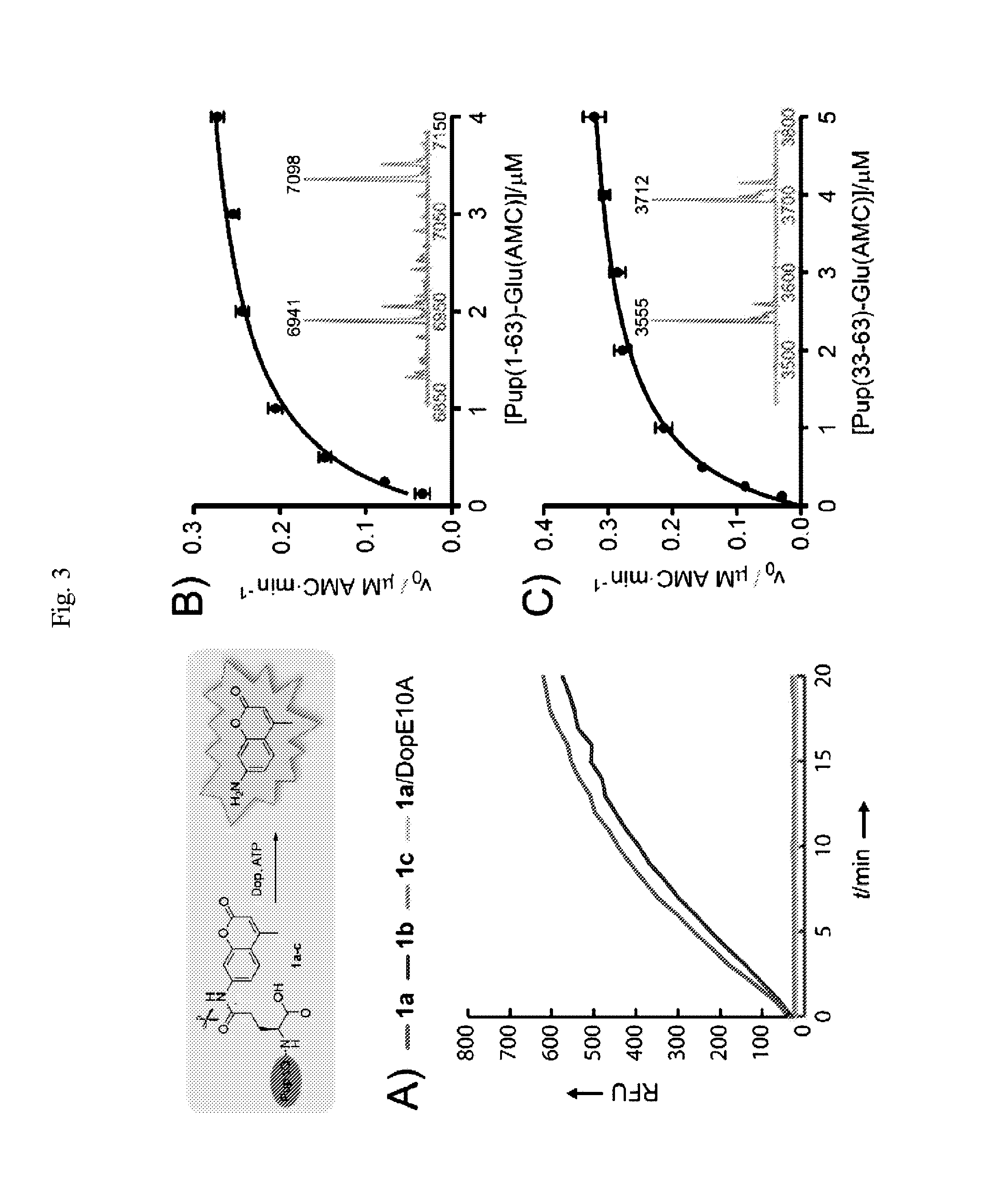Modified prokaryotic ubiquitin-like protein and methods of use thereof
a technology of prokaryotic ubiquitin and ubiquitin-like protein, which is applied in the field of molecular biology, regulated protein degradation, diagnostic and therapeutic medicine, etc., can solve the problem of limited homology among individual proteins in the system, and achieve the effect of facilitating dop isolation, reducing deamidase activity, and facilitating dop isolation
- Summary
- Abstract
- Description
- Claims
- Application Information
AI Technical Summary
Benefits of technology
Problems solved by technology
Method used
Image
Examples
example i
Methods and Materials
[0222]Synthesis of Peptides 1a-c
[0223]The PupΔQ sequence was synthesized on a pre-loaded Fmoc amino acid trityl resin (0.2 mmol / g) at 25 μmol scale, using fourfold excess of appropriately side chain protected Fmoc-amino acids in NMP relative to the resin, PyBOP (4 equiv) and DIPEA (8 equiv) were used as condensing reagents. Fmoc removal was carried out using 20% piperidine in NMP for 2×2 and 1×5 min and capping of the resin was performed with a mixture of Ac2O / DIPEA / HOBt in NMP at 500 mM, 125 mM and 15 mM respectively (3×1.2 mL, 2×2 and 1×5 min). During the synthesis different coupling protocols were used; coupling cycle 1-30: single couplings of 40 min, double couplings of 2×40 min for cycles 21, 22, 24 and 28, no capping; coupling cycle 31-39: single couplings of 60 min, double couplings of 2×60 min for cycles 33, 34, 38 and 39, no capping; coupling cycle 40-61: single couplings of 60 min, double couplings of 2×60 min for cycles 40, 42, 46, 48, 51-54, 58 and 5...
example ii
High Throughput Dop Inhibitor Screens
[0246]In the interests of developing second generation Dop substrates having structural / functional properties that differ from Pup-AMC conjugates, the present inventors have explored the utility of different fluorescent moieties and different lengths of Pup sequences. One of the structural / functional properties of Pup-AMC that the present inventors sought to modify is the detection of the AMC fluorophore (λEx / Em=450 nm / 350 nm), which can be adversely affected by autofluorescence of cell lysate components and screening compounds. It is, of course, noteworthy that such complications can be avoided, at least in part, by using a totally purified system. In that many reliable screening results are obtained with assay reagents that best resemble the natural substrates, there was, however, motivation to generate a full length Pup(1-64) conjugate. Along these lines, and given that Pup(1-63)-Glu(AMC) lacks the “native” Lys-Glu isopeptide bond at the C-ter...
PUM
| Property | Measurement | Unit |
|---|---|---|
| pH | aaaaa | aaaaa |
| time | aaaaa | aaaaa |
| volume | aaaaa | aaaaa |
Abstract
Description
Claims
Application Information
 Login to View More
Login to View More - R&D
- Intellectual Property
- Life Sciences
- Materials
- Tech Scout
- Unparalleled Data Quality
- Higher Quality Content
- 60% Fewer Hallucinations
Browse by: Latest US Patents, China's latest patents, Technical Efficacy Thesaurus, Application Domain, Technology Topic, Popular Technical Reports.
© 2025 PatSnap. All rights reserved.Legal|Privacy policy|Modern Slavery Act Transparency Statement|Sitemap|About US| Contact US: help@patsnap.com



